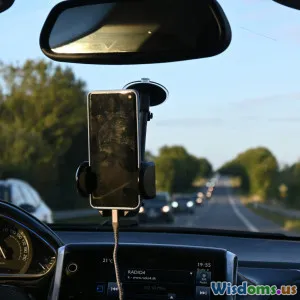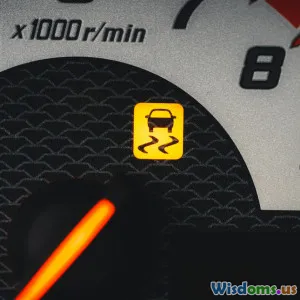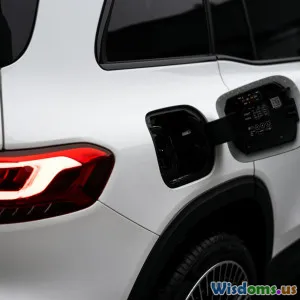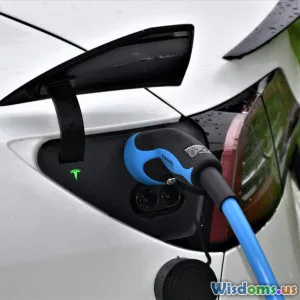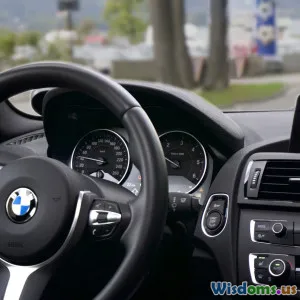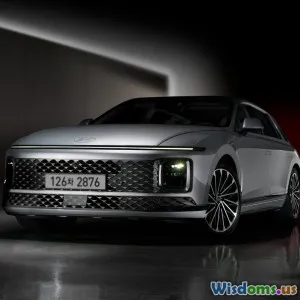
Why Traditional Mirrors Fail Versus Modern Driver Attention Systems
9 min read Explore why traditional mirrors fall short and how modern driver attention systems boost safety and awareness on the road. (0 Reviews)
Why Traditional Mirrors Fail Versus Modern Driver Attention Systems
Every driver knows the routine: glance into side mirrors, check the rearview, perform a shoulder check, and make a move. Those mirrors have been a mainstay in vehicles for over a century. But in the evolving landscape of vehicle safety, they are increasingly exposed as insufficient. With advancements in sensor technologies and artificial intelligence, modern driver attention systems are redefining how we detect hazards and maintain awareness behind the wheel.
This article explores why traditional mirrors fail drivers in critical ways and how modern driver attention systems address these shortcomings — highlighting real-world insights, accident statistics, and cutting-edge examples.
The Limitations of Traditional Mirrors
1. Restricted Field of View
At their core, mirrors are simple reflective surfaces with geometrical constraints. Side mirrors provide a narrow window into adjacent lanes, but many blind spots persist. The Society of Automotive Engineers (SAE) estimates blind spots are primarily caused by limited mirror coverage and driver misalignment in checking angles.
For example, despite adjusting side mirrors to reduce the blind zone, a typical passenger vehicle still leaves significant visual gaps equivalent to nearly 30% of the adjacent lanes. This is critical on highways when fast-moving vehicles occupy those blind spots out of direct sight.
2. Low Effectiveness in Dynamic Situations
Traditional mirrors only offer static snapshots that require the driver to interpret quickly under pressure. During lane changes or merges, rapid traffic movement means split-second decision-making is needed. Unfortunately, human reaction time limits the ability to process mirror images and react before collision.
Data from the National Highway Traffic Safety Administration (NHTSA) report shows that side-swipe accidents frequently involve missed mirror checks or underestimation of distance/speed. These incidents highlight how static mirrors provide limited assistance in fast-changing environments.
3. Vulnerability to Environmental Factors
Mirrors are directly exposed to weather conditions such as rain, fog, dirt, and glare, which degrade visibility. For example, glare from headlights or sun can blind the driver momentarily when checking mirrors, creating dangerous delays.
Nighttime conditions further impair mirror utility. Illumination constraints and low contrast scenes minimize the detail visible in mirrors, increasing the chance a driver fails to note a vehicle present.
4. Reliance on Driver’s Head Movement and Attention
Mirrors help only if the driver actively and correctly uses them. Driver fatigue, distraction, or improper adjustment reduce effective use. Studies indicate distracted drivers overlook critical mirror checks up to 40% of the time during complex maneuvers.
Moreover, drivers with limited neck movement, such as elderly or those with medical conditions, face difficulties performing necessary glance checks to mirrors.
Enter Modern Driver Attention Systems
To overcome traditional mirror limitations, automotive engineers have innovated driver assistance technologies that provide enhanced, real-time awareness and intervention support.
What Are Modern Driver Attention Systems?
At a high level, these systems integrate cameras, radar, lidar, infrared sensors, and AI algorithms to monitor vehicle surroundings and driver status continuously.
They include features like:
- Blind Spot Detection (BSD)
- Lane Departure Warning (LDW)
- Adaptive Cruise Control (ACC)
- Driver Drowsiness and Distraction Detection
- Automatic Emergency Braking (AEB)
Manufacturers like Tesla, Volvo, Mercedes-Benz, and Subaru champion these technologies, embedding them into both luxury and affordable vehicles.
1. Comprehensive Situational Awareness
Unlike traditional mirrors, which provide limited physical views, driver attention systems compile sensor data to render a 360-degree awareness bubble around the vehicle. For instance, blind spot monitoring uses ultrasonic sensors to detect cars hidden from mirrors and alerts the driver with audible beeps, vibrations, or visual icons inside the cabin.
Studies show blind spot alert systems can reduce side-swipe collisions by up to 14% according to IIHS statistics, demonstrating measurable improvements in safety.
2. Augmented Human Decision-Making with AI
Driver assistance systems leverage AI to process data instantly, assess risks dynamically, and warn drivers proactively before errors happen. Volvo’s IntelliSafe system exemplifies this by combining lane keeping support and automatic braking when attention filters detect impending hazards, thus reducing severe crashes by 20%.
3. Enhanced Detection in Adverse Conditions
Sensor fusion allows modern systems to maintain high detection accuracy even in rain, darkness, fog, or glare. Infrared cameras can detect pedestrian heat signatures at night, radar penetrates fog better than optical mirrors, and AI filters out noise to avoid false alarms.
This consistency vastly surpasses the fluctuating performances of traditional mirrors, ensuring better all-weather safety.
4. Continuous Driver Monitoring
One of the most transformative upgrades is driver monitoring through inward-facing cameras and sensors to determine alertness levels, head position, and eye movement.
For example, Cadillac’s Super Cruise employs a driver attention system that sounds alerts or disables semi-autonomous driving if driver focus wanes. This addresses the root cause of many accidents: human error born from fatigue or distraction.
Real-World Impact and Case Studies
German Autobahn Blind Spot Alerts
A pilot program on Germany’s autobahns equipped vehicles with blind spot detection and driver monitoring. Results indicated a 25% reduction in lane-change incidents in equipped cars versus traditionally mirrored ones over 12 months.
Tesla Autopilot Systems
Tesla’s Autopilot uses a combination of cameras and ultrasonic sensors instead of mirrors for environment awareness. The direct measurement of surroundings combined with AI support has led to reported decreases in crashes, though it is critical that drivers maintain attention.
Governmental Safety Recommendations
Regulatory bodies increasingly endorse modern driver assistance. The European Union mandates advanced safety systems including driver monitoring for new types of vehicles by 2024, reflecting growing trust in the superiority of these technologies over traditional mirror reliance.
Why Drivers Should Transition Mindfully
While modern attention systems represent the future, they are not standalone safety miracles. Drivers must complement technology by maintaining situational awareness and using systems as aids rather than sole decision-makers. Learning proper interactions with these systems prevents overreliance and complacency.
Moreover, understanding system limitations, such as GPS errors or sensor obstructions, is essential to avoid accidents caused by false confidence.
Conclusion
Traditional mirrors were a revolutionary tool for decades, but their inherent limitations in field of view, reaction capacity, environmental resilience, and user dependency have exposed them as inadequate for modern road complexities.
Modern driver attention systems overcome these constraints with cutting-edge sensor arrays, AI-powered analysis, and proactive alerts that greatly improve driver safety and reduce crashes. As automotive technology progresses, integrating advanced attention systems alongside conscious driver efforts is paramount.
Embracing these innovations not only addresses the failings of traditional mirrors but elevates road safety standards globally. The future of driving lies in synergy between technology and human vigilance.
By understanding why traditional mirrors fail versus modern driver attention systems, drivers and manufacturers alike can make informed decisions toward safer roads for all.
Rate the Post
User Reviews
Popular Posts










